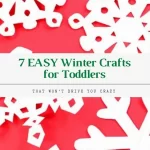Welcome to The ArtsyFartzy Experience, a blog where we blend creativity and practical solutions for everyday parenting! Today, we’re diving into the world of “Organizing Kids Toys” – a challenge that every parent faces. Let’s make it fun and feasible!
Introduction
Are you constantly stepping on toys and feeling overwhelmed by the chaos in your kids’ rooms? You’re not alone! Organizing kids’ toys can be a daunting task, but with the right strategies, it can be turned into an enjoyable experience for both you and your children.
Age-Appropriate Organizing Tasks
For the Tiny Tots (Aged 2)
At two years old, kids love to imitate adults. Use this to your advantage by introducing simple organizing tasks. Teach them to put toys back in color-coded, picture-labeled, or category bins. This not only keeps toys organized but also aids in their color, or item recognition skills.
You can make it a fun game to see how fast you both can do it, or who can get the most. Toddlers want to feel the success of doing things for themselves, so celebrate each item that makes it in the box.
This could also look like a dialog of the parent narrating what the child is doing i.e., “You picked up the car, and put it away in the toy box.” This simple technique can empower little ones by acknowledging their choices and abilities.
Fun with Five-Year-Old’s
Five-year-old’s are full of energy and ready for more responsibility. Assign them specific places for different types of toys. Picture labels can be a great tool to help them remember where each toy belongs.
But think one big categories such as “cars and trucks” vs. HotWheels, and construction vehicles, and monster trucks, and character cars, and so on. Keeping organizing simple makes the goal attainable for children, so throw all of the vehicles into one container.
At this age, organizing for kids starts getting easier. It becomes a little less of a teachable moment about colors or item names, and focuses more on their ability to take responsibility for their items.
Eight-Year-Olds: Involvement is Key
At this age, kids can understand more complex organizing systems. Introduce them to categorizing toys by type or size and let them decide how they want to arrange their toys, giving them a sense of ownership and responsibility.
They can start making those tough decisions about what to keep and what to let go of. The container concept really helps for this age. You provide a toybox or bins to hold their toys and they get to decide what they wish to keep as long as it has a home in the space available for toys.
Ten-Year-Old’s Take Charge
Ten-year-old’s are capable of maintaining more sophisticated systems. Encourage them to participate in deciding what storage solutions work best for their needs and let them take the lead in organizing their spaces.
Often, older children are ready to start letting go of toys and are learning what works best for their organization style. Allow them to rearrange their room or change how and where things are stored.
What often works best is creating guidelines the child can follow, “You can have your room the way you wish but…” These guidelines may include nothing can be on the floor or the dresser has to be clear. Figure out your sticking points, but give them the power to solve this problem.
Also, giving reminders for refreshes is periodically needed. Ask them to go through their clothes at the changing of the seasons, or to go through their toys before birthdays or holidays.
Making Cleanup Fun
Turning cleanup into a game can be a game-changer. Race to see who can pick up the most toys in five minutes or make a basketball game out of putting stuffed animals back in their bin. Rewards can be simple, like an extra story at bedtime.
Storage Solutions
When it comes to ” kids’ toy organization,” think easy-to-use and maintain. Open shelves with bins, under-the-bed storage boxes, and over-the-door organizers can work wonders. Ensure that these are within your child’s reach.
Decluttering Together
Involving kids in decluttering decisions teaches them to make choices and understand the value of their possessions. Have regular sessions where you and your child decide together what to keep, donate, or discard.
Simply being in the room while your child is decluttering can help them to feel supported and to regulate their emotions while they are making hard decisions.
Final Thoughts on Organizing Kids Toys
Organizing kids’ toys is not just about a tidy home; it’s about teaching responsibility and making the process enjoyable. Remember, consistency is key, and with these strategies, you can transform chaos into an organized, playful environment.
Over time children will develop their decluttering muscles to do these tasks on their own and as an adult. You are doing them such a favor for their future.
If you enjoy these tips checkout this post on dealing with holiday gifts for your children and this one on getting organized for back-2-school.




